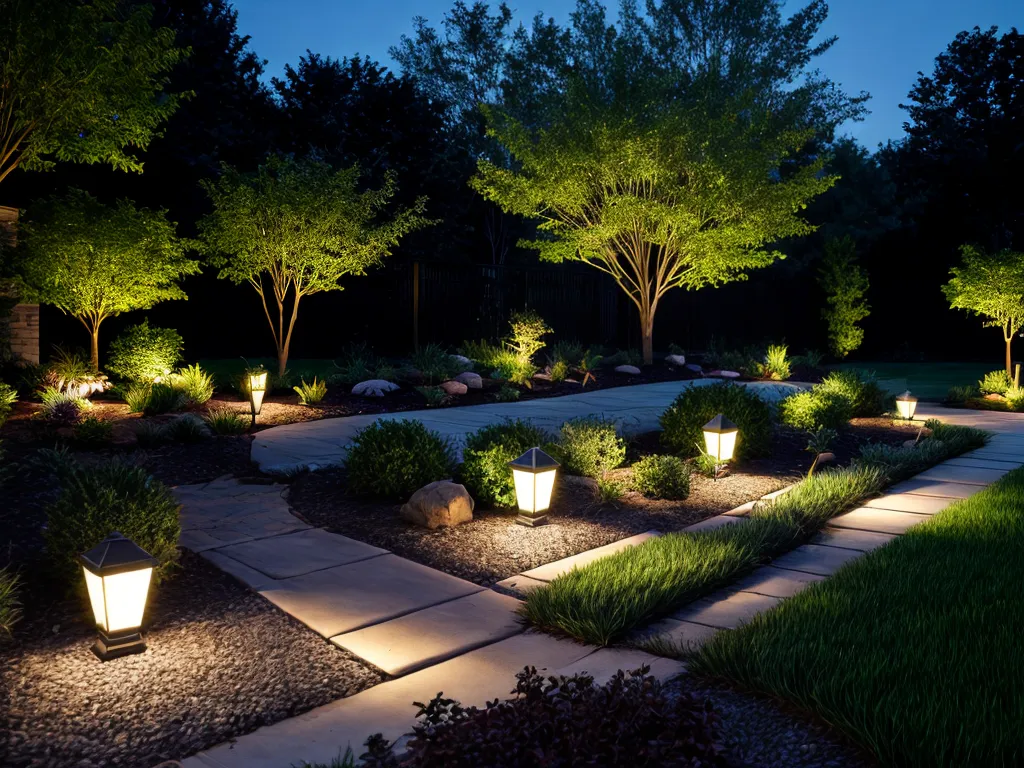
Installing low voltage landscape lighting can greatly enhance the beauty and functionality of your outdoor space. However, there are some common mistakes that are easy to make when installing landscape lighting for the first time. Being aware of these potential pitfalls can help you avoid frustration and added costs down the road. In this comprehensive guide, I will share the most common mistakes people make with low voltage landscape lighting and provide tips on how to avoid them.
Choosing the Wrong Type of Lights
When selecting landscape lighting, you need to consider the purpose, location, and ambiance you want to achieve. The three main types of low voltage landscape lights are:
-
Path lights - Illuminate walking paths and driveways. Small and shine light downward.
-
Spot lights - Focus bright light on architectural or landscape features. Flexible arm to aim.
-
Flood lights - Provide diffuse, wide spread lighting. Light up large areas.
It's easy to choose stylish path lights and spot lights when your goal is a soft, ambient glow. I made the mistake of only buying flood lights for my small backyard. While they lit up the space, the harsh glare ruined the relaxed vibe I wanted.
To avoid this, determine your lighting goals first and select the appropriate mix of light types. Path lights are perfect for winding garden pathways. Spot lights highlight an architectural detail like a fountain. And flood lights work better to illuminate a patio or deck.
Not Planning the Layout
Failing to plan where your landscape lights will go is another common trap. The placement impacts how the space will look when lit up at night.
By taking measurements and marking light locations on a sketch of your yard, you can experiment with different layouts:
-
Where should spotlights aim to highlight features?
-
What areas need ambient lighting from path or flood lights?
-
How far apart should lights be spaced for optimal coverage?
Planning the layout ahead of time ensures the final effect is cohesive and balanced, not random and uneven. It also prevents discovering glaring dark spots after all the lights are installed.
Ignoring Wattage Needs
Low voltage landscape lighting runs on 12V power, but the lights still vary in wattage. Wattage indicates the brightness. Most path lights are 2-5 watts. Spot lights range from 5-20 watts for intense directional lighting. Flood lights are typically 10-25 watts.
However, brighter isn’t always better. Using high wattage floods to light up a small garden bed will result in a blinding glare, not a soft glow. On the other hand, 5-watt path lights may not provide enough light on a long, dark path.
Consider the size of the area, your goals, and ambiance you want. Select the appropriate wattage lights for each application.
Inadequate Transformer
The transformer is the power source that converts your 120V household current into 12V power. Purchase one that can handle the total wattage of all your lights combined.
Undersizing your transformer is a recipe for frustration. The lights will be dim or keep shutting off from overloading the transformer.
Similarly, extensions cords also have wattage limits. Plugging too many lights into one cord can overload and melt the cord, presenting a fire hazard.
When in doubt, choose a higher wattage capacity transformer and use multiple lower wattage extension cords. This reduces risk of overloads.
Not Digging Deep Enough
Burying the low voltage cables is a necessary step we all want to rush. But doing it too shallow leads to cables popping up from frost heave. This causes tripping hazards, damage, and dead spots when cables pull loose.
Bury cables at least 6 inches underground, 8-12 inches is better. Use cable rated for direct underground burial. Code requires burying 18 inches deep under driveways and sidewalks.
Digging extensions trenches properly takes more work upfront, but prevents problems later. Do it right the first time.
Cheaping Out on Cables
With landscape lighting, the quality of the wiring makes a big difference in performance and durability.
Cheap landscape wire has thin insulation that cracks over time. Direct burial cable has a tough outer jacket for protection underground. Spending a little more on quality cable prevents cracked insulation and signal loss.
Also, choose copper core wire over aluminum. Copper has lower resistance for less voltage drop over longer cable runs. Aluminum wire is prone to corrosion and signal loss.
Use UL-approved connectors and waterproof gel-filled wire nuts for reliable connections. Proper outdoor cables and connectors prevent lighting failures and electrical shorts down the road.
Not Sealing Connections
Outdoor low voltage connections must be waterproof and corrosion resistant. Moisture causes shorts, corrosion degrades connections over time leading to lighting failures.
Coat all connections in dielectric grease before sealing with shrink tubing or waterproof wire connectors. Dielectric grease prevents moisture penetration. Shrink tubing reinforces connections and fully seals them.
For quick disconnects, use gel-filled waterproof connectors so you can change individual lights if needed. Prevent moisture damage by properly sealing all low voltage connections.
Forgetting Access for Future Repairs
When installing landscape lighting, it’s easy to focus on burying all the cables neatly out of sight. But wires fail over time, lights can malfunction. Leaving access to buried cables allows repairs and replacements down the road.
Run sections of PVC conduit underground between lights. Use junction boxes with removable lids to create access points along the cable path.
Leaving access points makes maintaining and upgrading your system much simpler. You’ll thank yourself the first time a wire needs to be replaced!
Proper planning and installation techniques prevent many headaches with low voltage landscape lighting. Focus on choosing the right light types and placements, sizing components adequately, burying deep enough, using quality cables, sealing connections properly, and allowing for future access. Careful attention to detail during installation rewards you with a beautiful and functional lighting system that you’ll enjoy for years to come with minimal maintenance.